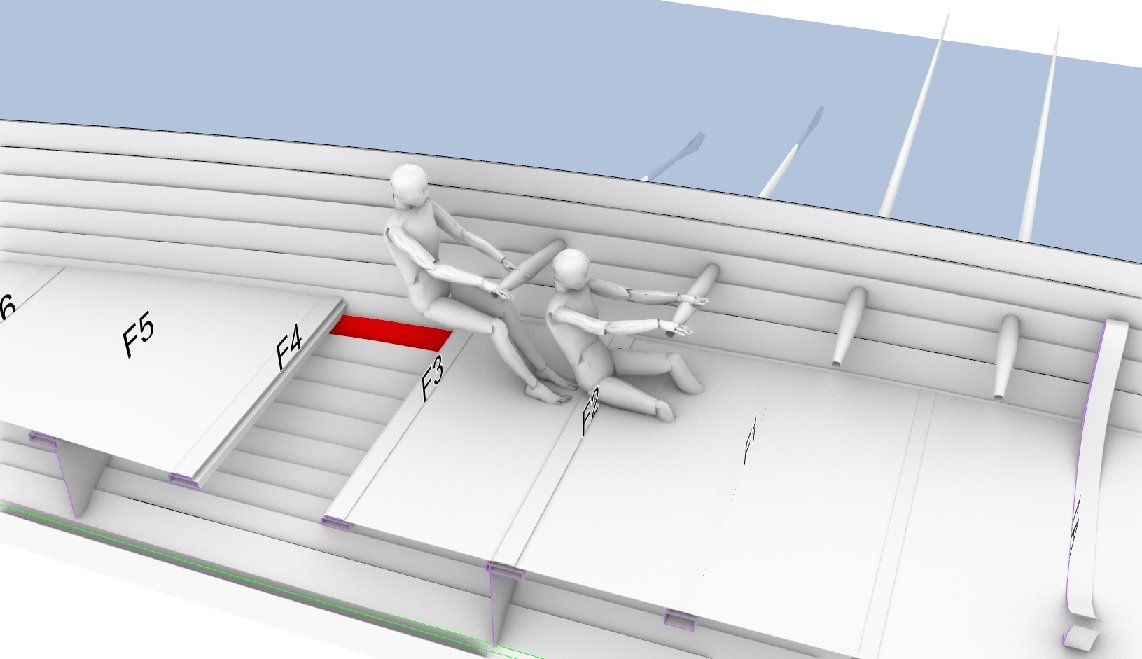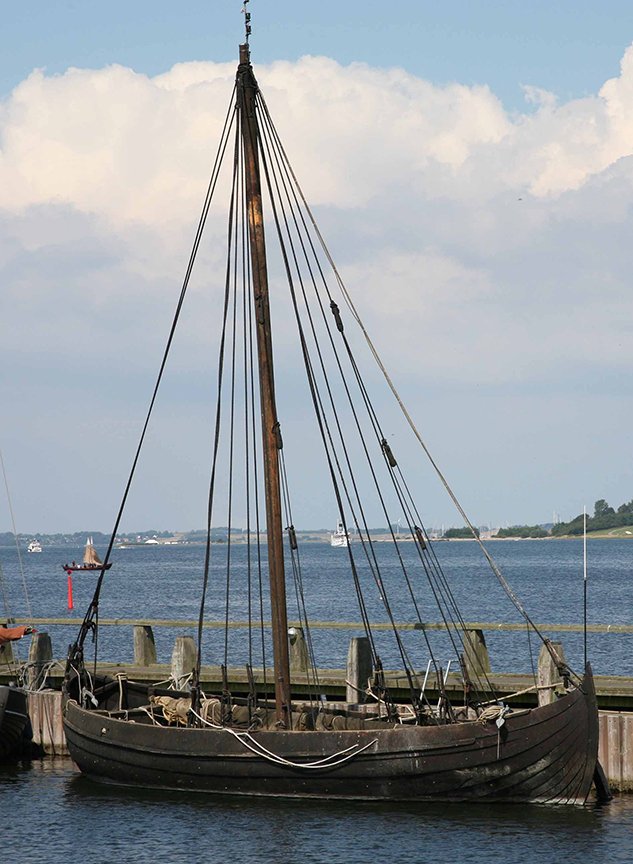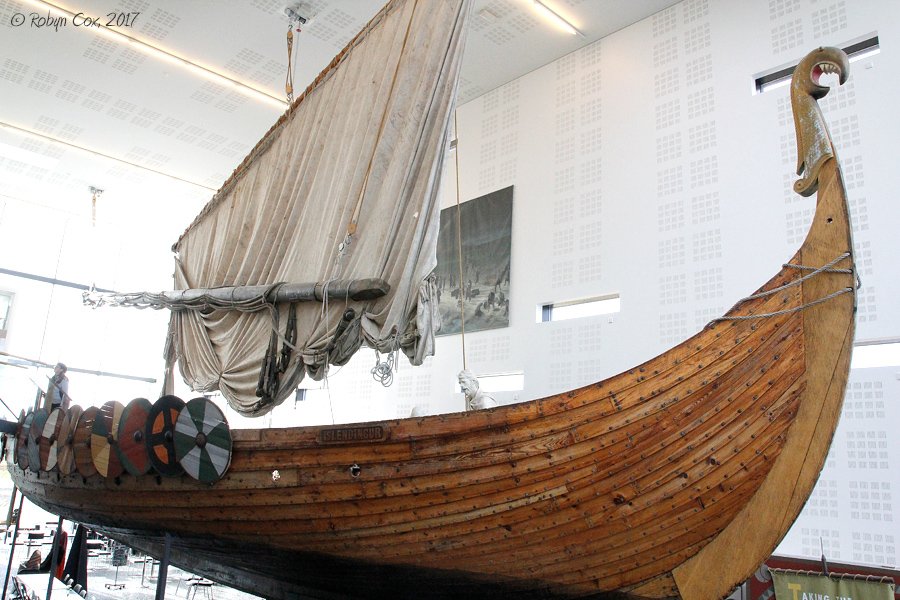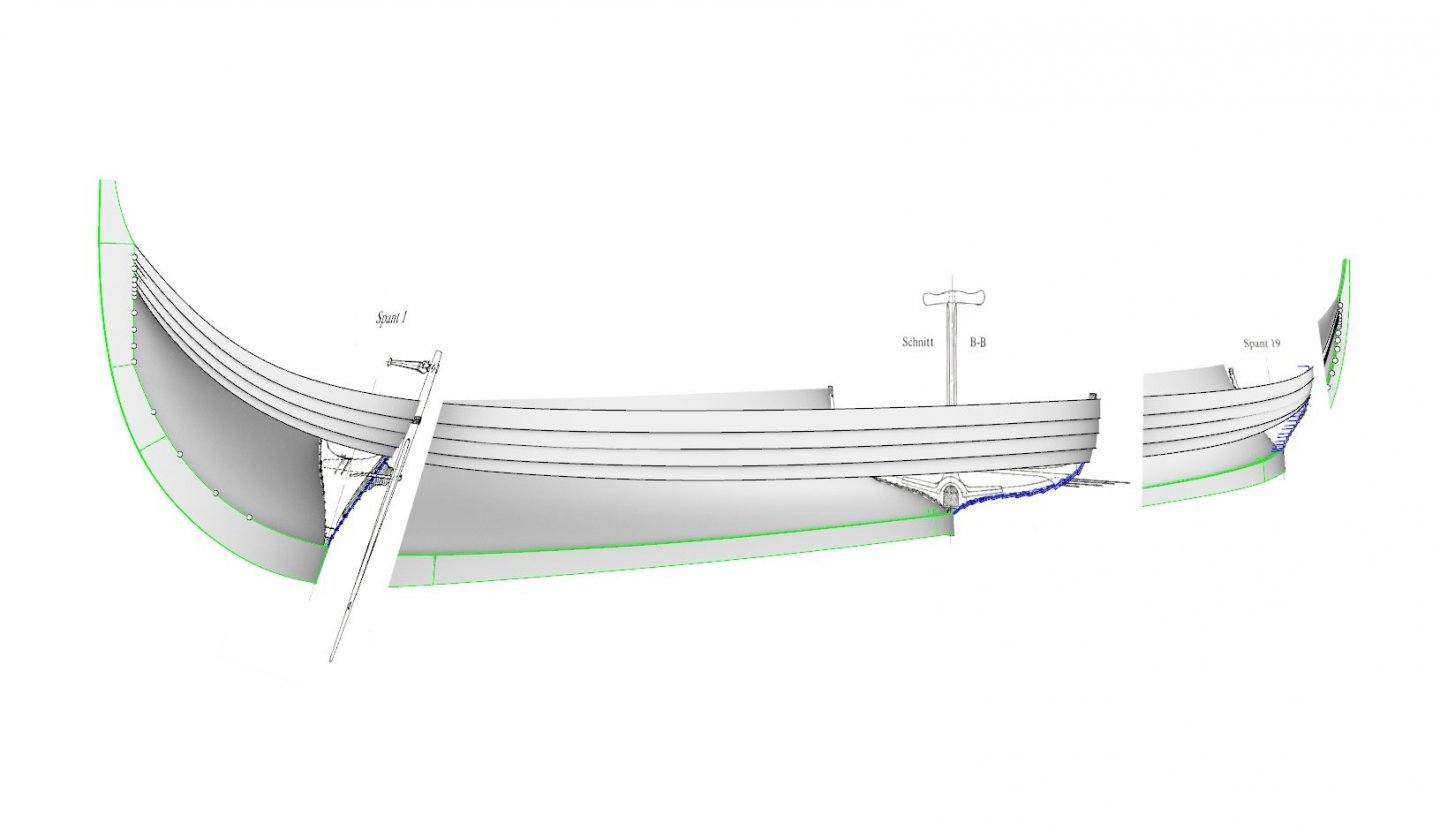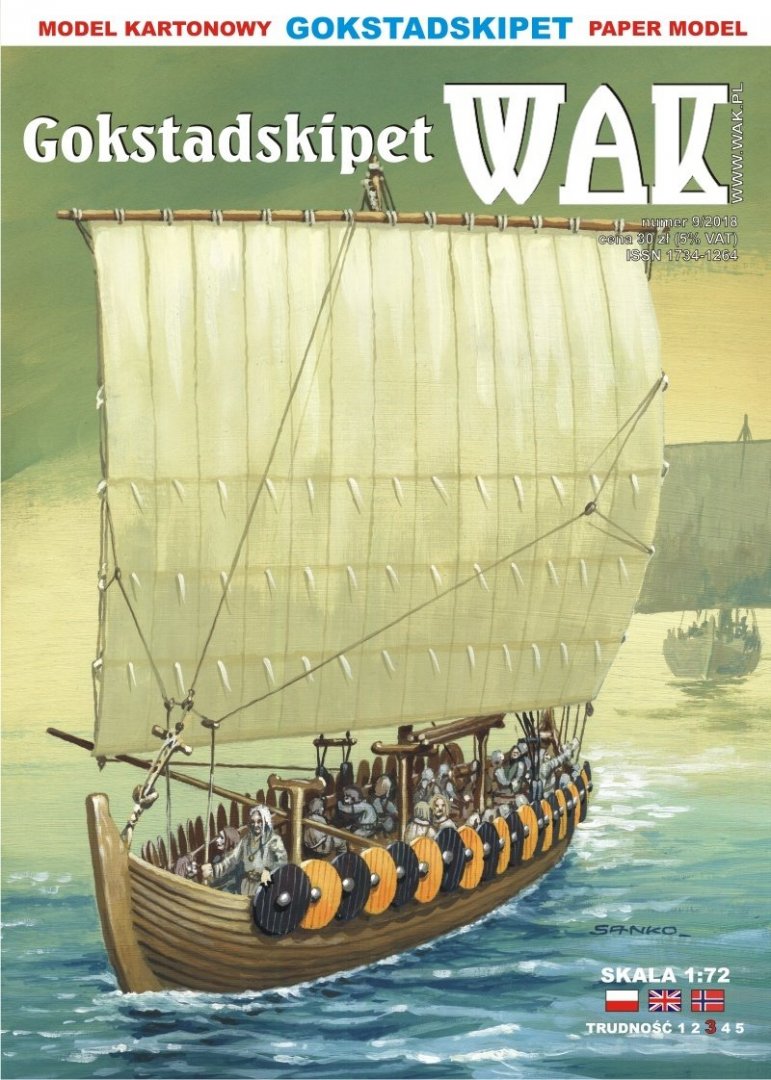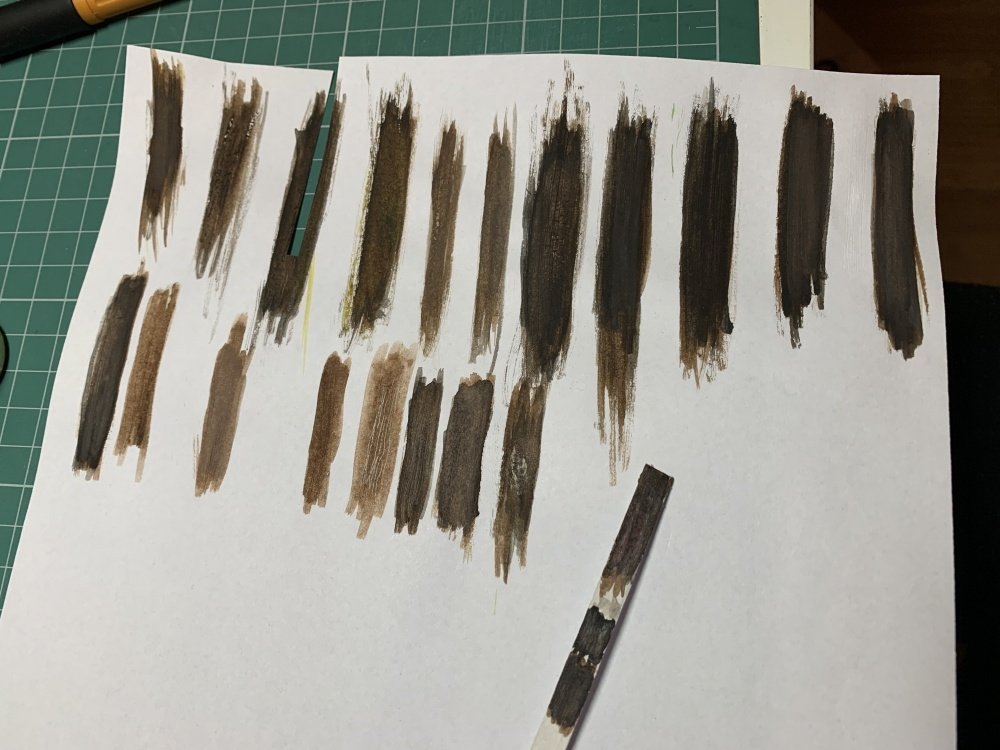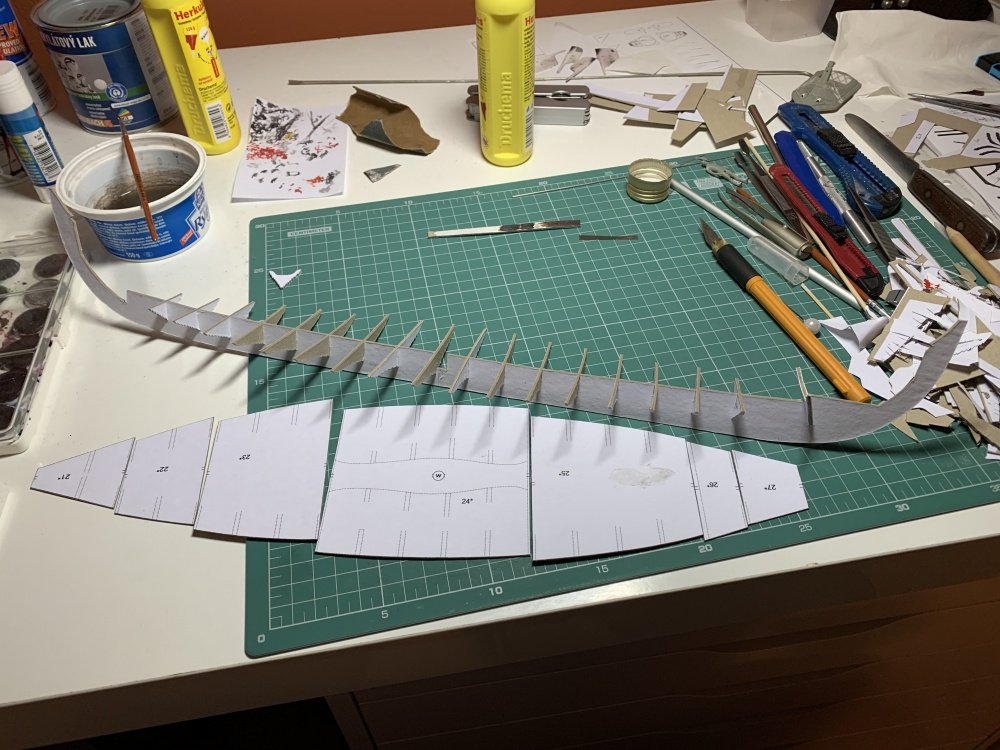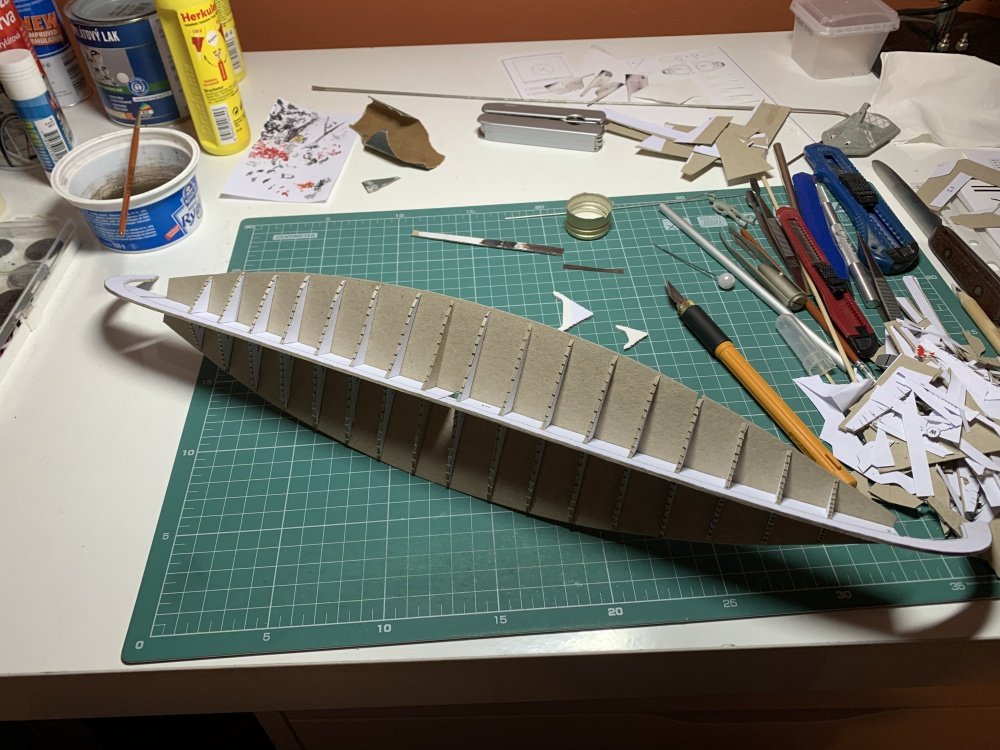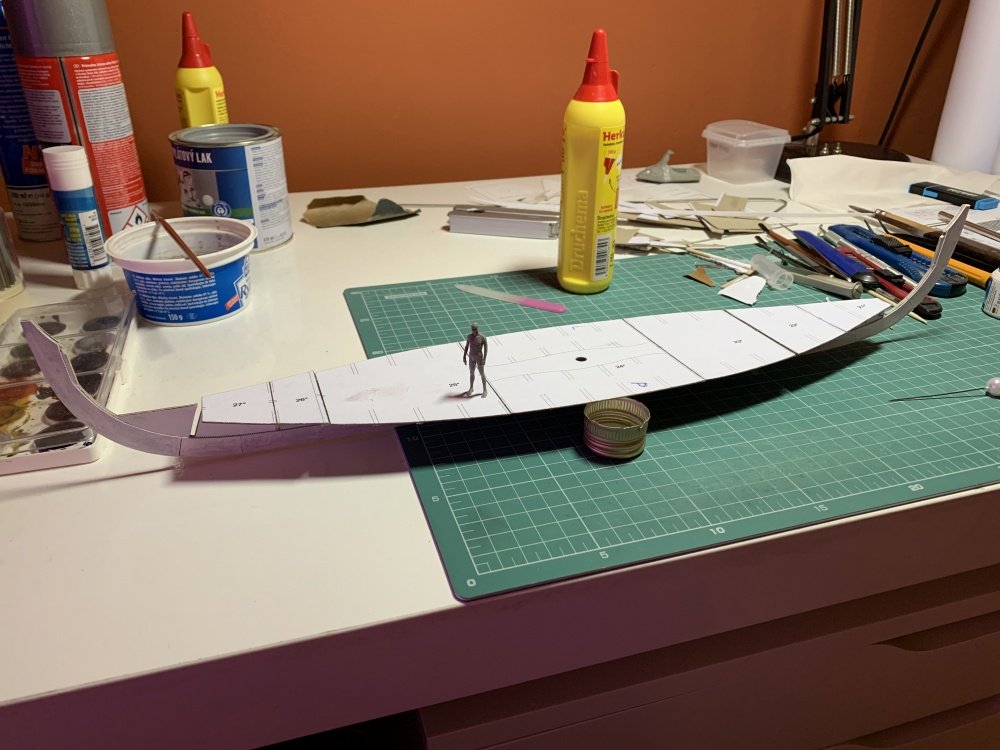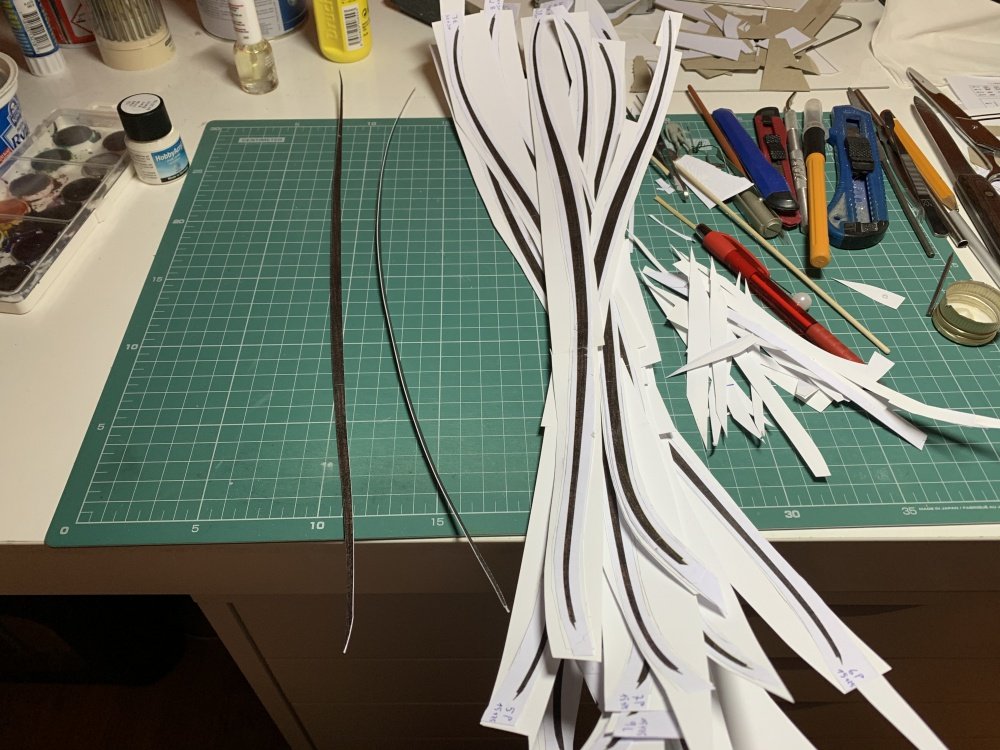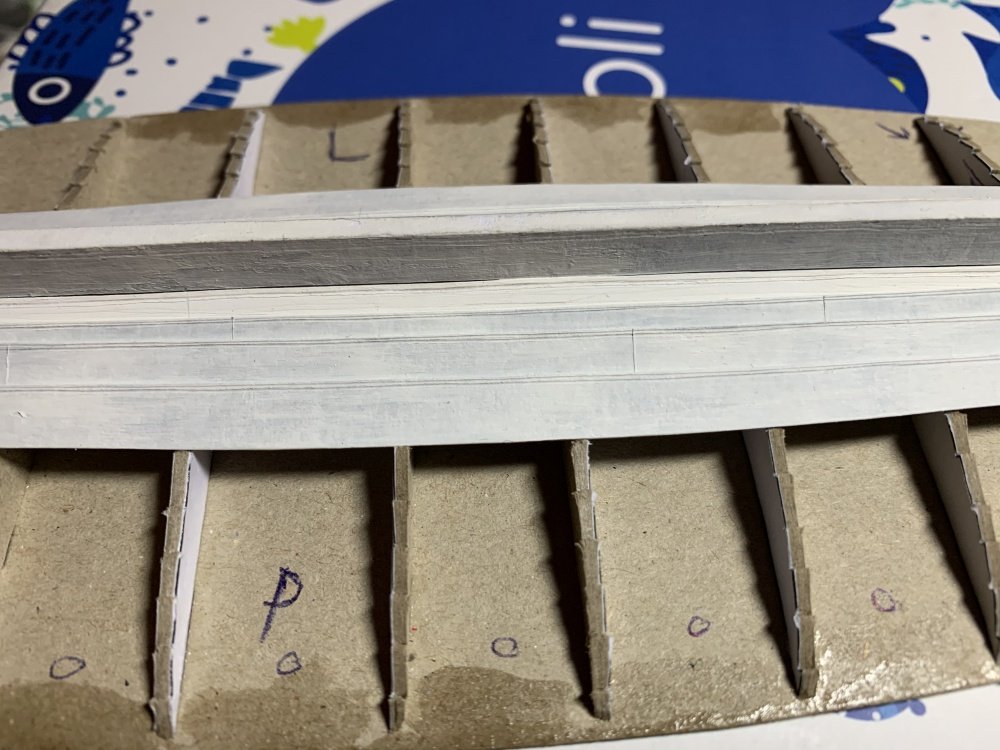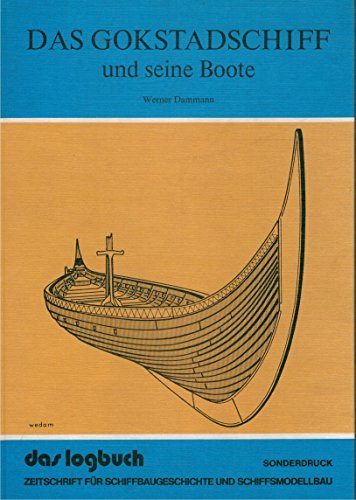
bigpetr
Members-
Posts
123 -
Joined
-
Last visited
Content Type
Profiles
Forums
Gallery
Events
Everything posted by bigpetr
-
Hi Balclutla, nice start, I thing that scoring of the plank is not for easier twisting but it is a mark where next plank shoud owerlaps. So I think you do not have to score it with blade necesarily. Maybe the pencil, or somthing that will survive water treatment, will do.
-
Skuldevev ships have build in benches as part of the frame. Gokstad and Oseberg have no such a thing, so we can only speculate nad use experimental archeology. Most of the functional Gokstad replicas are not full scale but mainly 1/2, 2/3 or 1/4. All fullscale replicas used chests as benches for rowers. Smaller scale replicas has built in benches or chests. So none of the replicas used deck beams as benches as far as I know. Kriss, to produce nice surface in Rhino you need to have clean curves with adequately distributed curves control points/knots. To solve what causing you the problems I would have to see the curves. You can send them to me and I will look at it and give you some tips, if you want.
-
Thank you Kris, new forum organization is great, I also found great threads I missed earlier . Thanky you Louie, I am trying my best. I have read about Oseberg ship that its hull shape was adjusted and changed by archeologist at least once, so now, that I know none of Gokstad plan si probably 100% right I can get away with what I have . I am still tweaking it a little when adding another parts of the ship. It is possible. It is one of the the reasons I am modeling it. To get the shape of the ribs and planks and other parts.
-
You can use Contour function in Rhino to make cross sections. http://docs.mcneel.com/rhino/5/help/en-us/commands/contour.htm
-
I am using Roskilde museum replicas as color reference. All their ships have this dark colour, but they use modern chemical - Hempel's Classic, which has copper as the active preservative substance. So I do not know how much authenic is this colour. Another replica, Islendingur, is painted dark only under the water level. It is mentioned in Erik the Red saga that they used seal tar for bottom of the ship, but it is not known what seal tar consisted of. So maybe this is more like it, who knows:
-
I have the same look at it as you have Binho, but I keep saying myself that if they did not cheated and matched rivet holes while reconstructing, it can not be too off from the original shape 😀 I am using Rhinoceros for modeling. It has good flatenning functions to produce 2d templates out of unfoldable 3d objects.
-
I have some progress with planking. It takes me longer then I expected, because I had to compare four sets of source data - Nicolaysen plans, Dammann book plans, Oslo museum plans they had there in year 1999 and photographs of reconstructed ship displayed at museum. Quite a diferences amongst this data sets I must say. Even in basic numbers like length, width and height of the ship. I used combination of dimensions that seems right to me, so I can not say I am 100% right. If some of you know whitch plan is the closest to the reality, please let me know. It would help me a lot in my endeavour to have it right. First four planks. I will be further tweaking the planks when all 16 is in place. Dots marks the end of each plank.
-
I thougth you are going to burn the ship after this post. Sorry if I did not understand correctly.
-
I admire you for puting so much effort to the ship you will burn. I do not think it is so crucial to have exact planking as oseberg to stay on the watter. As long as rib shapes are right the ship will not sink.
-
I would not worry about water based glue. I would use it and seal the finished hull with varnish. It will prevent plywood from delamination too.
-
Hello friends, this is continuation of the journey that begun here: After the initial try with the paper kit I came to the conclusion to build from scratch, so I continue my Gokstad ship build in this forum section. I am sorting out and comparing plans and measurement from Werner Dammann book "Das Gokstadschiff und seine Boote" and from Nicolaysen book "The Viking Ship Discovered at Gokstad in Norway". There is lots of differences so I decided to start with measurements given in numbers and then tweak the drawn plans to fit those numbers. I do it all in 3D software. I have started to plot the curves based on the plans. They will be tweaked later to match the numbers.
-
I reached control point with my planking and I am way off at the stern and stem. After the searching why this happend I figured that the keel becomes longer because I use water based glue to make him and the paper stretched. I will have to start over because I also want to change the planking itself to be more precise.
-
Rivet head is punched from 0,1 mm thick paper by this jewelery tool. I also use it to punch holes to paper.
-
Hi KrisWood, I am folowing your build with great interest. Some thoughts on rivets. I do not know the measurements of rivets at Oseberg ship, but on Gokstad ship, I am building right now, rivet head diameter is 2,5cm. It means 1mm in 1:25 scale, so I think they will be noticeable and will look great on the model in 1:25 scale. Here is rivet test I did on my Gokstad model 1:48 scale. Rivet has 0,5mm in diameter. After this test I decided I will make them. Eventhou they will be covered by "tar" colour their presence will be noticeable. It will be lots of work to add them but it will be worth it.
-
Thanky you, happy to be here. Petr
-
Hi friends, I have finaly decided to build Gokstad viking ship because I always wanted to build viking ship. Basic info about the ship can be foun here: https://en.wikipedia.org/wiki/Gokstad_ship I used beautiful paper model kit from poland publisher WAK in 1:72 scale as a base for the build and upscaled it to 1:48 scale. Original build of the kit from its designer loks like this: Kit is used basicly as a plan. I am altering thickness of the parts according actual ship. I will be sanding some parts and repainting the whole ship (since I will modify the kit I do not know if I choose right forum category to start the thread, hopefuly yes). Main source of information is this book - Das Gokstadschiff und seine Boote by Werner Dammann . It is full of information about the ship construction including thickness and type of used material. Here are some preliminary tests to find suitable colours. Frame went together nicely according the instructions: I am painting each plank white, separately. Brush strokes are also part of the proces to make the effect of wood texture. I do the carvings on the plank. Then the plank is attached to the hull.
-
Hello friends, I am modeler from Czech Republic. I am interested in ships from ancient era and middle age. My goal when modeling is historical accuracy. Although I have some modeling experience I am new to ship building. So I am looking forward to be your company and learn the art of ship building. Petr
About us
Modelshipworld - Advancing Ship Modeling through Research
SSL Secured
Your security is important for us so this Website is SSL-Secured
NRG Mailing Address
Nautical Research Guild
237 South Lincoln Street
Westmont IL, 60559-1917
Model Ship World ® and the MSW logo are Registered Trademarks, and belong to the Nautical Research Guild (United States Patent and Trademark Office: No. 6,929,264 & No. 6,929,274, registered Dec. 20, 2022)
Helpful Links
About the NRG
If you enjoy building ship models that are historically accurate as well as beautiful, then The Nautical Research Guild (NRG) is just right for you.
The Guild is a non-profit educational organization whose mission is to “Advance Ship Modeling Through Research”. We provide support to our members in their efforts to raise the quality of their model ships.
The Nautical Research Guild has published our world-renowned quarterly magazine, The Nautical Research Journal, since 1955. The pages of the Journal are full of articles by accomplished ship modelers who show you how they create those exquisite details on their models, and by maritime historians who show you the correct details to build. The Journal is available in both print and digital editions. Go to the NRG web site (www.thenrg.org) to download a complimentary digital copy of the Journal. The NRG also publishes plan sets, books and compilations of back issues of the Journal and the former Ships in Scale and Model Ship Builder magazines.


